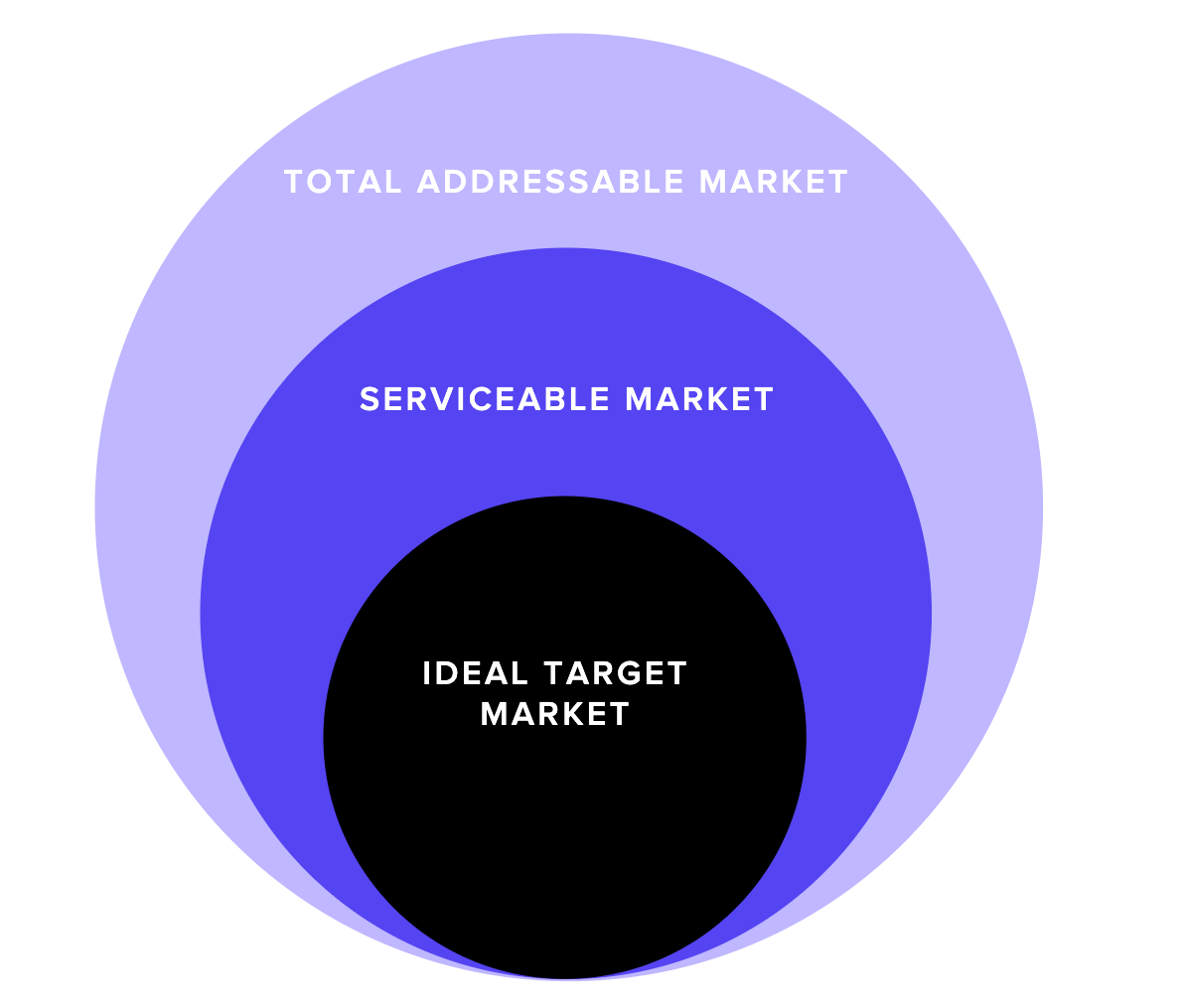You’ve found your target customers, you’ve created personas, and you’ve tailored your content strategy for them. You’ve filled your editorial calendar and published fresh content, but your results are…meh. You just can’t seem to grow your audience. Why? Sometimes it’s because you’re not thinking big enough.
One of the best things about content marketing is that it’s a potent force to attract the right people to your brand. But when you’re too focused on bringing one specific type of person in, you often neglect a much larger community that can do more for you in both the short and long term.
It’s a common trap, but one you can get out of—if you can alter your thinking about who your audience is and what they want.

The Real Goal of Content Marketing
To build a successful brand that wins in the marketplace, you need a healthy and thriving marketing machine. But what does that look like, and how do you measure it? We particularly love the way that Salesforce approaches this challenge.
As Jessica Bergmann, Salesforce VP, Content Strategy & Customer Marketing said during her keynote presentation at Content Marketing World 2022, Salesforce grades their content marketing success through three main goals:
- Build: Did we attract new audiences?
- Engage: Did we keep the audience engaged?
- Move: Did we move them to the next step?
To do any of these things, you need to have crystal clarity about how you show up in the marketplace, who you’re connecting with, and how you connect with them. Unfortunately, we often see brands (including many of our clients) get hung up in all of these areas, particularly with attracting new audiences. They have such tunnel vision about their “ideal customer” that they miss huge opportunities to connect with their larger market—and lose significantly because of it.
So, how do you help your brand grow and reach more people?
3 Ways to Grow Your Audience
If you’re not getting the results you want from your marketing efforts, it may be time to take a step back and assess whether your target audience is too small or exhausted. For example, if you’ve been targeting the same niche audience for years and are seeing diminishing returns, it might be time to expand your reach. Here are the best ways to do that.
1) Reassess your Total Addressable Market (TAM).
Your goal as a business should be to grow your audience, not just maintain it. This means taking a more holistic view of your market and considering your TAM (aka the total number of potential customers in your market). This includes customers who are currently buying from your competitors, as well as those who have not yet entered the market. By expanding your focus beyond your current customer base, you may be able to tap into a larger pool of potential customers.

In many industries (especially B2B), there is sometimes a disconnect between who we want and who we get as customers. You already know who your ideal customer is, and you are catering to them, but it may be time to reassess your TAM to find new opportunities for new customers.
- Look at your current customers. Do they match the profile of your ideal customer? Do they have slightly different needs, wants, or challenges? This can be a clue to who is naturally attracted to your brand—and which groups you might want to target more.
- Research your competitors. Look at your competitors and see who they are targeting. Are there untapped segments of the market that you could go after? Are there adjacent industries or markets that could benefit from your product or service? By broadening your target audience, you may find that there are more opportunities to grow your business than you previously thought.
- Look at industry research. Look for market reports, industry publications, and other sources of information to gather data on your overall market size and potential for growth. (For example, changes in consumer behavior, emerging technologies, or new regulations can all impact the size and potential of your TAM.)
Tip: To reach these larger groups, you may need to rethink your marketing strategy. Instead of focusing solely on customer acquisition, consider investing in brand awareness and sharing your expertise through additional channels (think paid campaigns and industry publications).
The more conversations you’re having in different spaces, the more you expand your opportunities.
2) Reassess your messaging.
If you’ve hit a plateau with your current audience, or if you’re looking to expand (based on your TAM research), you will almost surely need to reassess your messaging and visuals.
Research the way your larger audience talks about the things you do. (One of the most rookie marketing mistakes is focusing on irrelevant keywords.) Always remember: It doesn’t matter how you talk about something; it matters how they talk about it.
That doesn’t mean you can’t introduce your own expertise into conversations, or use your vocabulary. But it does mean you need to find the right language to start those conversations. For example, all though we consider the work we do to be “brand development,” we know our audience often calls this “brand strategy.” By targeting that keyword, but introducing that larger audience to our own terms (like “brand heart”), we have been able to capture a larger swath of people and introduce them to our unique brand-building perspective.
Tip: Use our free brand messaging template to identify your key messaging pillars and create compelling content around them. (You can also use our free marketing campaign template to come up with specific talking points to reach additional audiences.)
3) Share behind the scenes of your brand.
You’re used to focusing only on what your ideal customer wants and needs, but there are many more people “watching” your brand from afar who care about who you are and what you do. This includes employees, future employees, vendors, and peers in your industry.
These are all people who may be in need of your services or may eventually want to contribute to your brand’s success (particularly as employees). You need to engage with those audiences if you want your brand to grow, now and tomorrow.
- Encourage employees to create content. Your team is full of people with unique perspectives and expertise. The more you showcase that, the more you can put a human spin on your brand, grow your employee network, and improve word-of-mouth marketing among people you may not have connected with before. Find out more about how to turn your team into content creators.
- Reach out to industry partners. Vendors and partners are also invested in your success. By building strong relationships with them, you may be able to access their networks and expand your reach. This could include co-marketing opportunities, guest posting, joint ventures, or other collaborations.
Remember, too, that today’s interns and junior-level people are tomorrow’s decision-makers. We’ve had colleagues who have subscribed to our newsletter since their startup days and are now heading marketing at billion-dollar companies. Although they may not have used our services then, they’re using them now—and we have maintained our relationship with them through our content marketing all along. (This is why we also include those junior-level people in our marketing personas, even though they are outside of our “ideal customer” right now.)
Tip: Find out more about how to build and market your employer brand to current and potential employees, and find out how to capture more people’s attention by doing culture marketing on social media.
Above All, Focus on Value
No matter who your audience is, there is one important thing to remember about content marketing: You should never create content just to create content. That’s the marketing equivalent of busy work. (In fact, for clients struggling to connect with their audience, we often recommend paring back content while getting the rest of your strategy in order.) Instead, focus on providing rich content with a clear path.
- Conduct a content audit. This will give you a sense of your own content gaps and opportunities (as well as your competitors’) to understand areas you can fill in with high-value content. Use our free content audit template to do it.
- Use a divisible content strategy. With a divisible content strategy, you create a large, rich piece of content, then use that content to create a variety of supporting content to promote across different channels. It’s a smart way to maximize your output and create a batch of rich content for different audiences. (This strategy has helped us target a general marketing audience, as well as B2B and SaaS marketers.)
- Give them a next step. Nobody should interact with your content and wonder what to do/where to go next. Give them a clear CTA, whether that’s a download or a demo sign-up. (On that note, you’re welcome to download our free guide to build an airtight content strategy.)
Above all, know that the most important factor in your content marketing success is the ability to generate quality content consistently. If you’re struggling to do that, or need a little support, see our guide to optimize your content production or find out what it’s like to work with us. Content marketing can be a wild world, so having the right partner in your corner can transform your results.
Either way, we hope you’ll continue to learn about best practices, work smarter, and grow your audience one piece of content at a time.





